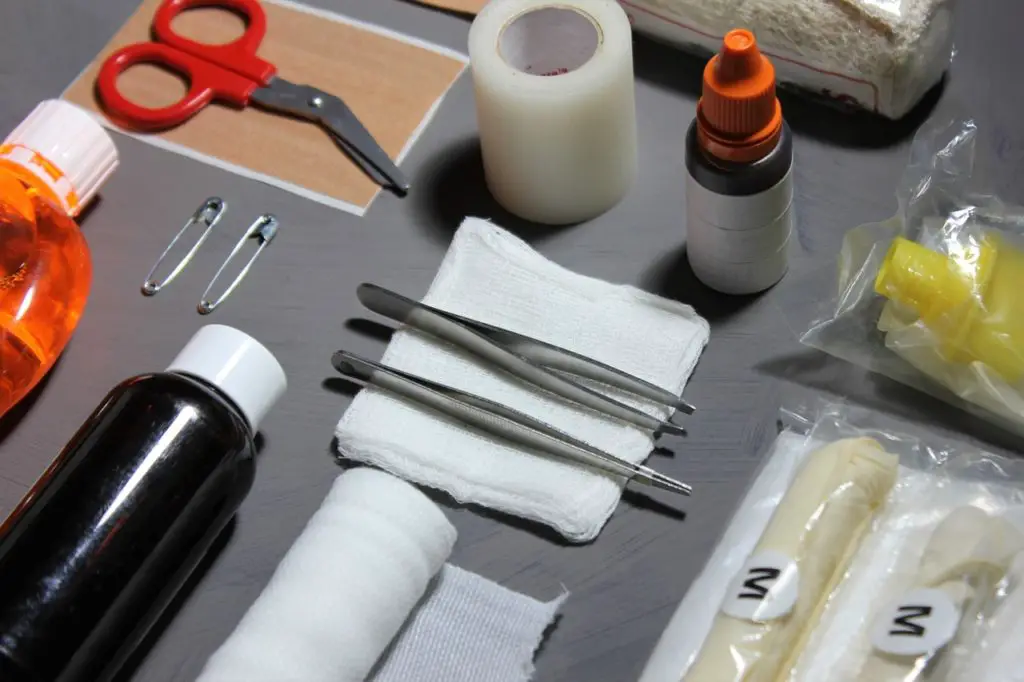Bleeding gums are the most common oral disorder after cavities. Gums that easily bleed may be the symptom of an underlying disease or simply of improper brushing or flossing technique. Don’t worry! This article will help you understand those underlying causes and provide some guidance on how to help and prevent future bleeding.
Why do my gums bleed when I brush or floss?
Here are the most common causes of bleeding gums:
- Self-inflicted oral trauma aka you’re brushing or flossing wrong!
- Gingivitis: A minor gum disease most commonly associated with puffy, sensitive, red gums.
- Periodontitis: A more serious gum disease (and often progression of gingivitis) that first damages the tissue surrounding the tooth, then the bone that supports it.
- The side effects of medications.
- Infections.
- Vitamin deficiencies or a poor diet.
- Hormones and pregnacy.
- New or ill-fitting dentures.
- The side effect of other unrelated diseases.
1. Improper brushing or flossing
- Bleeding during brushing:
● Occasional or random bleeding of the gums can be caused by brushing your teeth too intensely.
● Regular bleeding of gums might be due to several underlying causes mentioned and explained below.
● As simple as it sounds, the best thing to do is make sure you’re brushing properly and for the correct amount of time. This can be the solution to many of the underlying problems. - Bleeding during flossing:
● Gums will bleed when flossing because of plaque buildup in between and on the teeth. This leads to the gums becoming sensitive.
● Bleeding is usually seen during the initial days of flossing and it should recede as plaque and build up is removed.
● Many times bleeding occurs when flossing too hard or when sliding the floss between teeth is difficult.
2. Gingivitis
- People develop gingivitis when plaque stays on gum line too long as a result of poor oral hygiene, inadequate plaque removal, and/or tartar build-up. Plaque consists of the food debris and bacteria that stick to your teeth.
- Brushing removes plaque and prevents the development of cavities but, at times, plaque may stay on the gum lines if not brushed and flossed properly. The plaque then turns to tartar, which is more difficult to remove, thus exasperating the problem.
- Tartar build up occurs at the base of the tooth, often beneath the gum line.
- Symptoms of gingivitis include tender gums, bleeding, bad breath, inflamation, and a bright red or purple color.
- Gingivitis can be reversed with proper oral hygene. See our recommendations below.
3. Periodontitis
- Advanced gingivitis, when untreated, leads to periodontal disease.
- It’s most commonly associated with receding gums that appear to pull away from the teeth. Pain from chewing, loose teeth, and worsened conditions of gingivitis are all symptoms of periodontitis.
- Periodontal disease, or periodontitis, is an infection of the gums, jawbone, and supportive tissues that connect the teeth and the gums.
- Periodontitis leads to bone loss which causes the teeth to loosen or fall out.
4. Medications
- There are certain medications that can cause the gums to swell and bleed more profusely than normal. They make the gums more sensitive and more susceptable to tearing. Such medications include:
- Hypertension or blood pressure medications
- Blood thinners or anticoagulants
- Seizure medications
- Anti cancer medications
- Aspirin
- Be sure to discuss any potential side effects of medication with your doctor and disclosure current medications to your dentist.
5. Infections
Bacteria or any other microbial (viral or fungal) sometimes due to trauma or decreased immune response will cause the gums to bleed.
6. Vitamin Deficiencies
- Deficiencies of vitamin C, K, B-12, and calcium are frequently associated with gum diseases.
- Vitamin C helps in the repair of tissue. Lack of the vitamin can lead to scurvy, which affects the gums and skin, but gums can be affected far sooner.
- Vitamin K helps the blood to clot, so a lessend ability to clot means more bleeding.
7. Hormones and Pregnacy
- Oestrogen and progesterone are associated with friable blood vessels (meaning tissues that tear and bleed easily), particularly in the gums.
- During pregnacy, periods, and menopause, women are more prone to gum bleeding.
- There is even a condition called “pregnacy gigivitus” because the prevlence of bleeding gums is so common in pregnant women.
8. Dentures
- New dentures (or old dentures that don’t fit correctly) can cause the gums to become sore and lead to bleeding.
9. The side effect of other diseases
- Thrombocytopenia, Leukemia, diabetes, and several other blood disorders cause an imbalance in the immune system and the body’s blood clotting ability, resulting in bleeding gums.
- Discuss any serious diseases you have with your dentist to be sure that they are aware.
Home Remedies for bleeding gums
Most of these interventions can be done at home to slow and stop bleeding gums.
- Brushing and your toothbrush.
- Brush your teeth at least twice a day; ideally once in the morning and again before bedtime.
- If you haven’t been brushing regularly, use a softer bristle toothbrush, and even run it under hot water first to soften the bristles.
- Use proper brushing, tongue cleaning and flossing technique to prevent gum diseases. Brush for two minutes, spending about thirty seconds on each quarter of your mouth.
- Change your toothbrush or toothbrush head every three months.
2. Try changing your toothpaste to one specifically designed for gum diseases. We recommend Paradontax for Bleeding Gums.
3. Floss daily. If you can’t get into the habit of flossing, try a water flosser. This Waterpik Pearl is my choice because it’s the right combination of affordable and effective, not overly large, and it’s rechargeable.
4. Use an antibacterial mouthwash to rinse for thirty seconds. Your dentist may decide to prescribe a mouthwash with chlorhexidine in it. You can also use a saltwater mixture of 1 teaspoon of sea salt with a glass of warm water.
5. Stop Smoking! Smoking increases the risk of gum disease and is not good for your health. This includes vaping as well.
6. Try chewing sugarless gum after meals when you can’t brush. Look for the ADA seal on the package and make sure that it doesn’t contain Xylitol, which is a sweetener that can still contribute to cavities.
7. Maintain a proper healthy and balanced diet to prevent vitamin deficiencies. This is often easier said than done, but you can always supplement with a daily multi-vitamin.
8. Go to the dentist regularly. This isn’t a home remedy per se, but it is a step that you can take to achieve better oral health. Go at least once every six months for cleanings and checkups.
9. Stop procrastinating on getting those dentures replaced. Another step that you need to take. Replace dentures that don’t fit properly and notify your dentist if dentures are not comfortable or are causing soreness.
There is no “quick fix” for bleeding gums – nothing can replace regular oral hygene and professional dental treatment.
Do you have a dental first aid kit ready? See 9 Items You Need For A Dental First Aid Kit.
Should I keep brushing if my gums bleed?
Should you keep brushing if your gums bleed? Yes! If the cause of the bleeding is due to gum disease, not brushing and flossing will only make it worse. In fact, you should spend more time brushing in those areas. Take your time and brush the area softly and thoroughly. Be sure to floss in those locations as well.
What are the most common professional treatments for bleeding gums?
Some of these are maintenance, while others might be the result of prolonged neglect. Treatments might differ based upon the gum condition, sensitivity, pain, any effect on the bone, bone loss, and several other factors.
Professional Cleaning: Involves the regular care and cleaning of the tooth surfaces to make them smooth and plaque-free.
● This is a good choice when there are deposits of plaque and tartar on the teeth. It’s also a good opportunity to have a regular conversation with your dentist about any of your concerns.
● This procedure will be completed in a single appointment.
● Simple procedure and not expensive.
In most cases, the underlying cause is likely plaque. So, the removal of plaque followed by proper oral hygiene and regular dental checkups is enough to return your mouth to normalcy.
In some cases when the individual seeks help from a dentist at a much later time, it may result in much more complex and repeated dental appointments with a dental surgeon or periodontist, depending upon the severity of the condition. In such cases, the treatment procedures are mentioned below.
Root Planing: AKA a “deep cleaning” that is the result of a problem. It involves cleaning of all the tooth surfaces inside the gums to make the surface smooth, free of plaque and tartar.
● It is done when the deposits extend down to the root surface. It’s similar to a regular cleaning but sometimes a local anesthetic is used to make the process more comfortable.
● This procedure will be completed in a single appointment but the number of appointments might increase based on the severity of deposits.
● Complex procedure but not more expensive than periodontal surgery.
Periodontal Surgery: Minor surgeries are done over the gums, bone, and adjoining tissues to promote better oral health by removing the tissue that is infected by bacteria and is not allowed to heal in the surrounding areas.
● There are several types of surgery based on your particular conditions including bone grafts, soft tissue grafts, gum grafts, or gum flap surgery.
● This may or may not be completed in a single appointment. It will at least require an assessment appointment followed by the actual surgery.
● This is more expensive than previous procedures.
Dental Hygiene Education: Learning to make the lifestyle changes required to address the cause of gum disease might be as simple as watching an online video or listening to the advice of your dentist. This may include changing brushing or flossing techniques, the suggestion of a new toothpaste or mouthwash, or addressing adverse habits contributing to poor oral health.
Medications: In cases of vitamin deficiencies, supplements may be suggested in addition to good oral hygiene and a proper diet to increase your overall health. Your dentist may also prescribe a specific toothpaste or mouthwash.
When do you need to visit a professional?
You should visit your dentist when there is consistent pain, bleeding, and bad breath.
- When there is regular bleeding of gums upon eating, brushing, or flossing that doesn’t go away over time.
- When gums are swollen, puffy, red, or tender.
- When the gums recede and the teeth look longer. Or when the gums pull away from the teeth.
- When there is consistent bad breath.
- Any signs of pus on the gums or between teeth.
Remember: many of these problems are reversible when proper hygiene and home care is implemented. When in doubt, always visit a professional for an opinion. Don’t delay as this might result in even more expensive and invasive treatments.
References and Citations
1. Carranza’s Clinical Periodontology 12th Edition
2. medlineplus.gov/ency/article/003062
3. Glickman’s clinical periodontology 6th Edition
4. medical-dictionary/bleeding.gums/causes




